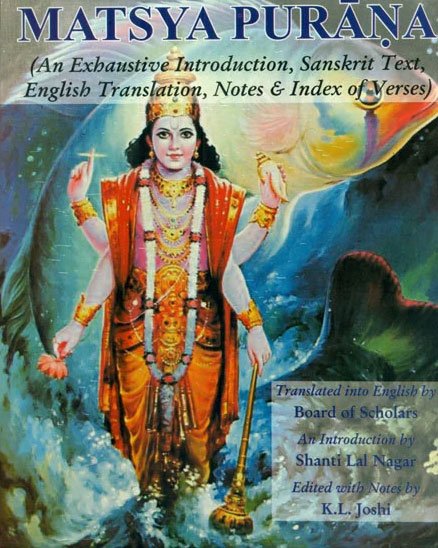The Matsya Purana (critical study)
by Kushal Kalita | 2018 | 74,766 words | ISBN-13: 9788171103058
This page relates ‘Genealogy of Kings and Princes in the Matsyapurana’ of the English study on the Matsya-purana: a Sanskrit text preserving ancient Indian traditions and legends written in over 14,000 metrical verses. In this study, the background and content of the Matsyapurana is outlined against the cultural history of ancient India in terms of religion, politics, geography and architectural aspects. It shows how the encyclopedic character causes the text to deal with almost all the aspects of human civilization.
Part 2 - Genealogy of Kings and Princes in the Matsyapurāṇa
In the words of Macdonell,
“History is the one weak spot in Indian literature. It is in fact, nonexistent. The total lack of the historical sense is so characteristic, that the whole course of Sanskrit literature is darkened by the shadow of this defect, suffering as it does from an entire absence of exact chronology.” {GL_NOTE::}
But it must be mentioned here that the above statement is not absolutely true as there were some works in ancient India which provide us with plentiful historical data. Moreover, the Purāṇas have given long genealogies of the ancient dynasties. They are the historical data on Indian political development found in Sanskrit literature.
As Pargiter rightly says,
“Tradition therefore becomes all-important. It is the only resource, since historical works are wanting and is not an untrustworthy guide.”{GL_NOTE::}
The genealogies of the ancient dynasties are given more or less by all the Purāṇas. The Vāyupurāṇa, the Matsyapurāṇa, the Viṣṇupurāṇa, the Brahmapurāṇa and the Brahmāṇḍapurāṇa are the most important Purāṇas so far as descriptions of genealogies of kings and princes are concerned. In the Purāṇas the chronology of kings and princes starts with Vaivasvata Manu and is divided into Solar and Lunar lines.
In the words of D. R. Mankand,
“Our Purāṇas as we have today, start with Manu Vaivasvata and branch off into Solar and Lunar lines. Both these lines first stop at the Mahābhārata war and then the Solar line goes on for about thirty kings and finally stops. The Lunar line, through its Hastināpura branch, stops after about thirty kings but through its Magadha line, goes on down to the end of the Andhras.”{GL_NOTE::}
Almost all the Purāṇas deal with ancient genealogies firstly of the time of the Mahābhārata War. Thereafter they deal with the dynasties of Post Mahābhārata War periods specially those of the North India. The earliest of those were the Pauravas who reigned at Hastināpura and Kauśāmbi, Aikṣvakus who reigned at Ayodhyā and the Barhadrathas who reigned in Magadha.
The Matsyapurāṇa has most elaborately discussed about the genealogies of the dynasties of the pre and post Mahābhārata war period. It has dealt with the Solar and Lunar dynasties. It has also dealt with the Pradyota dynasty, the Magadha dynasty, the Maurya dynesty, post Maurya dynasties etc. In the following lines we are going to discuss the genealogies of the kings described in the Matsyapurāṇa diving them into Pre-Mahābhārata War period and Post-Mahābhārata War period.
[1. Dynasties of Pre-Mahābhārata war]
[2. Dynasties of Post-Mahābhārata war]
Thus, it is seen that the genealogical account of the Matsyapurāṇa, like all other Purāṇas are admixture of historical as well as legendary elements. The dynasties of post Mahābhārata war period are mostly historical who ruled in India in different periods. The Matsyapurāṇa has enumerated the names of some kings and princess who will rule in future periods in the style of prophecy. This prophecy starts from Adhisomakṛṣṇa of Ikṣvāku dynasty.
The future kings of Ikṣvāku are described terminating with Sumitra. Similarly the future kings of Magadha, Kaurava, Kānva, Haihaya, Andhra etc. are described. The descriptions of these future kings are important from the historical point of view. The names of these dynasties are corroborated by Indian history also. But the minutes of descriptions found in the Matsyapurāṇa do not always tally with the historical data. However, more detailed study and research on these data will definitely open up many avenues, which will ultimately contribute to the understanding the Indian history properly.
